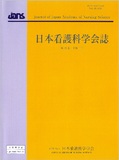Japanese
English
- 販売していません
- Abstract 文献概要
- 参考文献 Reference
要旨
目的:地域高齢者の体組成と体成分の握力低下への影響を明らかにした.
方法:縦断的観察研究を実施した.地域高齢者2,671人のうちベースライン209人,1年後155人に体成分,体組成,握力を測定し,Asian Working Group for Sarcopenia 2019の基準でベースライン値を低SMI(skeletal muscle mass index),高体脂肪率,たんぱく質量不足,ミネラル量不足,サルコペニア肥満の有無に分類した.1年後に対応のあるt検定,反復のある分散分析を行った.
結果:男性(n = 60)の握力低下(η2 = .011, p = .014),ミネラル量不足(η2 = .123, p = .003)とその交互作用(η2 = .011, p = .018)がみられた.
結論:男性では,ミネラル量不足が1 年後の握力低下に影響し,ミネラル量増加のための支援を検討する必要性が示唆された.
Objective: The goal of this study was to determine the effect of chemical composition of the body and muscle mass on decreasing handgrip strength among community-dwelling older adults.
Methods: In this longitudinal study, we measured body chemical composition and muscle mass at baseline (n = 209) and 1 year later (n = 155) in 2,671 community-dwelling older adults. Participants were categorized into specific groups: those with low skeletal muscle mass index (SMI), low handgrip strength, high percent body fat, protein deficiency, mineral deficiency, and sarcopenic obesity. This grouping was done using baseline data and according to 2019 criteria of the Asian Working Group for Sarcopenia. Baseline data were compared with data collected 1 year later using the paired t-test and repeated measures ANOVA.
Results: The study findings demonstrated that in men (n = 60), repeated measures ANOVA showed decreasing hand grip (η2 = .011, p = .014), mineral deficiency (η2 = .123, p = .003) and interaction (η2 = .011, p = .018).
Conclusions: Our findings suggest that mineral deficiency may influence decreasing handgrip strength over 1 year and the need to consider support for increasing mineral abundance in men.
Copyright © 2020, Japan Academy of Nursing Science. All rights reserved.


